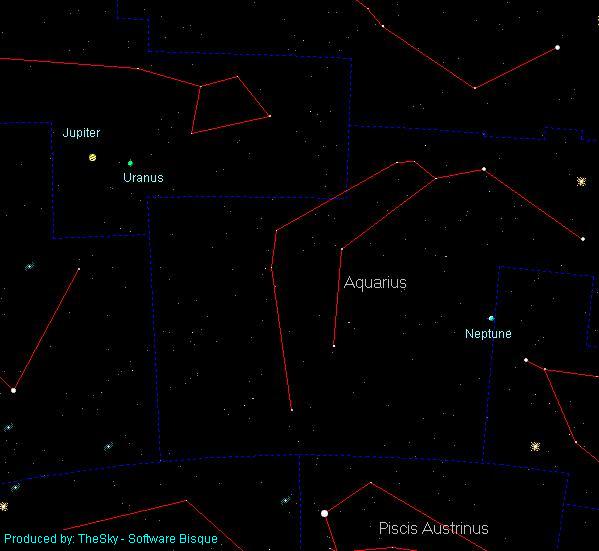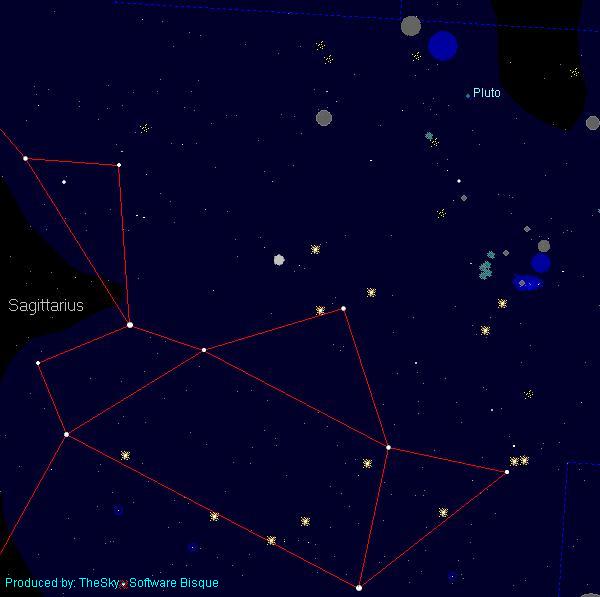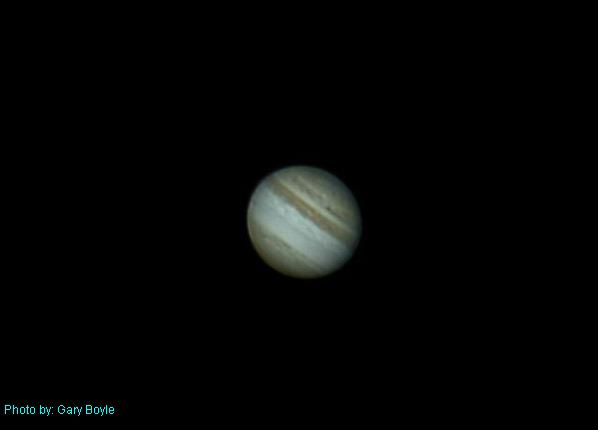Planets on Parade
On any given night, most of our solar system planets can be seen visually without optical aid or adored in the eyepiece of a telescope. It is a treat to be shared with friends, neighbours and at public star parties. After all, many people are surprised they are able to see our family of planets. The ancient Greeks called them the “wanderers”. The five visible planets that can be glimpsed naked eye are Mercury, Venus, Mars, Jupiter and Saturn. Uranus Neptune and Pluto were only found with telescopes a few thousand years later.
During the first half of August, all seven main planets (and yes even Pluto) can be seen. You will find these worlds over the course of a few hours after sunset but it will be worth the mission. Our lineup begins with the closest planet to the Sun, the planet Mercury. Because of its short orbit around our daytime star, Mercury does not stay above our horizon and away from the solar glare for more than a few weeks at a time. You can almost call it the last piece of the puzzle.

On August 1st Mercury will be 26 degrees from the Sun, thus allowing us to see this magnitude 0.2 world. Mercury will continue to climb higher up the ecliptic till the 22nd when it appears stationary and then sinks closer to the Sun the following nights till month’s end.
Moving up the ecliptic we see brilliant Venus. Our celestial spotlight can help guide you to the other planets in the area. Mercury and Venus are termed inferior planets, meaning they lie inside Earth’s orbit. As they dance around the Sun, they tend to sport different phase structure like the Moon. On August 1st Mercury and Venus will only be lit 55% and 57% respectively. Of the two, Venus puts on the better show. As these two planets maneuver between us and the Sun, the disks get wider as our distance shortens but the illumination dwindles.
Still climbing seven degrees to the left we find a double planet. From here on we call these the superior planets – those outside Earth’s orbit. They hold roughly a 100% lit surface all the time. Saturn is the higher and a bit brighter of the two is a tad less than two degrees from Mars. Saturn’s rings are slowing beginning to open and will look wider in the months and years to come. The nights of the 13th and 14th will be a beautiful grouping of all four mentioned planets also with the crescent Moon. Everything fits in 28 degrees of sky on the 13th but hunt out a clear west horizon as Mercury will be low in the sky. Start imaging as soon as it’s dark enough.
Keep swinging to the east to an area about the Teapot in Sagittarius to find elusive Pluto. At about 14th magnitude, this (now demoted) minor planet looks like any other star. Drawing the suspected star field and checking over the next week or so will reveal a slight movement. That is Pluto. Or you can cheat and punch it up on your computerized telescope if you have one.
All-stars appear sharp. However, if you happen across a fuzzy – bluish star on the Capricornus/Aquarius border, you have found the now farthest major planet of the solar system – Neptune. Unlike the phases of Venus, the majestic rings of Saturn, polar cap and hood on Mars as well as the belts of Jupiter, Neptune is not a very impressive telescope object.
The same goes for our next target Uranus. Like Neptune, Uranus is also a tiny, bluish-green fuzz that lies just under naked eye visibility. Uranus can be found three degrees (six full moons) to the left of brilliant Jupiter. It too is so far from us, we could not discern any detail if it had any. Uranus does own a dark spot, like Jupiter’s Red Spot. Both worlds currently reside in Pisces.

And speaking about the King of Planets we round off the parade with Jupiter. At magnitude -2.8 it is clearly the brightest object on the eastern sky. At the beginning of the month, it rises due east at about 10:30 p.m. local time. Jupiter possesses very interesting and ever-changing detail in its cloud structure. Dark belt and light zones are easily seen in practically any telescope but the smaller white spots and blue festoons require larger instruments and steady nights. To add to the portrait, the four Galilean moons are in constant motion. Check pages 231 – 235 of the RASC 2010 Observers Handbook for transit and shadow times.
If you have not seen Jupiter yet this year, you might be in for a bit of a shock. What used to be two vivid equatorial belts is not reduced to one. It was first discovered back on May 9 of this year by Australian astronomer Anthony Wesley. It turns out a slightly higher altitude layer of white ammonia ice crystal clouds appears to obscure the deeper, darker belt clouds. This has happened in the past and scientists believe this should clear up soon. Till then, check out this rare event.

When any bright object appears on the horizon, its image is distorted because we are looking through literally hundreds of kilometres of atmosphere that is always in motion. This is called turbulence. As the hours pass, our target climbs higher thus reducing the number of atmosphere photons pass through. Rule of thumb – the higher the better. With this in mind, the meridian (imaginary line connecting north and south) is the best place to observe and photograph.
A very simple way to remember the planets in order from the Sun is to match the first letter of the following to the first letter of the planet:
My Very Educated Mother Just Served Us Nine Pizzas (Mercury, Venus, Earth, Mars, Jupiter, Saturn, Uranus, Neptune and Pluto).
or
My Very Educated Mother Just Served Us Nachos (Mercury, Venus, Earth, Mars, Jupiter, Saturn, Uranus and Neptune).
Until next month, clear skies everyone.
| Object | Magnitude | Distance from Earth (km) | Distance (light travel) |
|---|---|---|---|
| Mercury | 0.23 | 149,940,000 | 8 min 20 sec |
| Venus | -4.20 | 128,520,000 | 7 min 08 sec |
| Mars | 1.48 | 304,470,000 | 16 min 55 sec |
| Jupiter | -2.75 | 659,430,000 | 36 min 38 sec |
| Saturn | 1.09 | 1,548,360,000 | 1 hr 26 min 01 sec |
| Uranus | 5.77 | 2,974,320,000 | 2 hr 45 min 14 sec |
| Neptune | 7.83 | 4,444,650,000 | 4 hr 06 min 56 sec |
| Pluto | 14.0 | 4,749,120,000 | 4 hr 23 min 50 sec |
